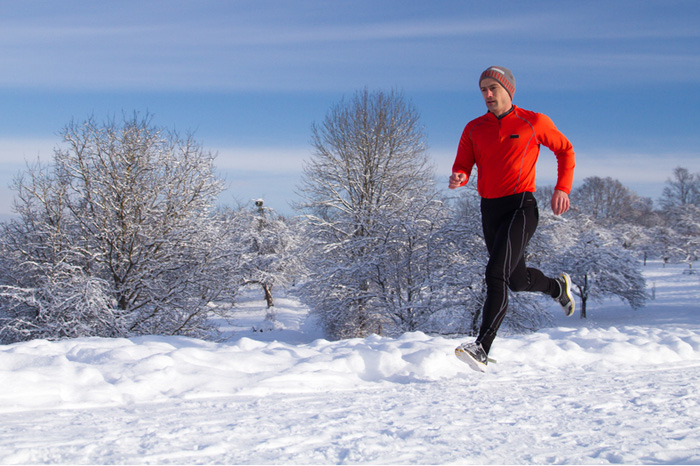When the weather turns cold, it’s easy just to stay in and be a couch potato. But consider the many benefits of working out in winter: It reinforces healthy habits, fights the winter blues, and keeps off holiday weight. However, before heading out this winter for a jog or to shovel snow, make sure your body is ready.
“Even the most committed athletes are more likely to suffer muscle and joint injuries when exercising in cold weather than in warm,” notes Dr. Thomas DeBerardino, Health Center orthopaedic surgeon. “Muscles and tendons can be strained from simply being too cold when you start an activity. But in that weakened state, you’re also more likely to incur a more serious injury, like a ligament tear in a joint or even a fracture from a fall.”
By and large, such injuries can be prevented by ensuring that you are both properly warmed up and attired prior to engaging in a cold-weather activity. Know your limitations, DeBerardino adds, and reduce the intensity of workouts on really cold days or when surfaces are especially slippery.
And when you do venture out in the cold, don’t forget a hat and gloves. This good advice from Dr. William Thramann, a UConn primary care physician, will help winter athletes avoid both frostbite and hypothermia.
“Frostbite occurs when the skin freezes due to exposure to the cold,” says Thramann.
The most common sites of frostbite are the fingers, ears, and nose — so steps to prevent frostbite include wearing gloves or mittens, a hat that covers the ears, and, when it is very cold, a mask that protects your face.
“Many winter sports, like ice hockey or cross country skiing, are intense enough that people perspire,” he adds, “so it’s also helpful to wear clothing that wicks moisture away from the skin, as wet clothing will freeze and increase the risk for frostbite.”
Another common problem in winter is hypothermia, “a potentially fatal condition in which the body is unable to produce or conserve enough heat to maintain a normal body temperature,” says Thramann. Avoid hypothermia by dressing warmly, staying dry, drinking plenty of water, and not overexerting yourself, he says.
Only if weather conditions are extremely poor will you need an indoor exercise backup plan. Otherwise, with common sense, a few precautions, and some extra layers, your winter workouts can be safe, invigorating, and fun. Of course, those with existing medical conditions should consult their doctor before beginning a cold-weather exercise program.
Follow the UConn Health Center on Facebook, Twitter and YouTube.



